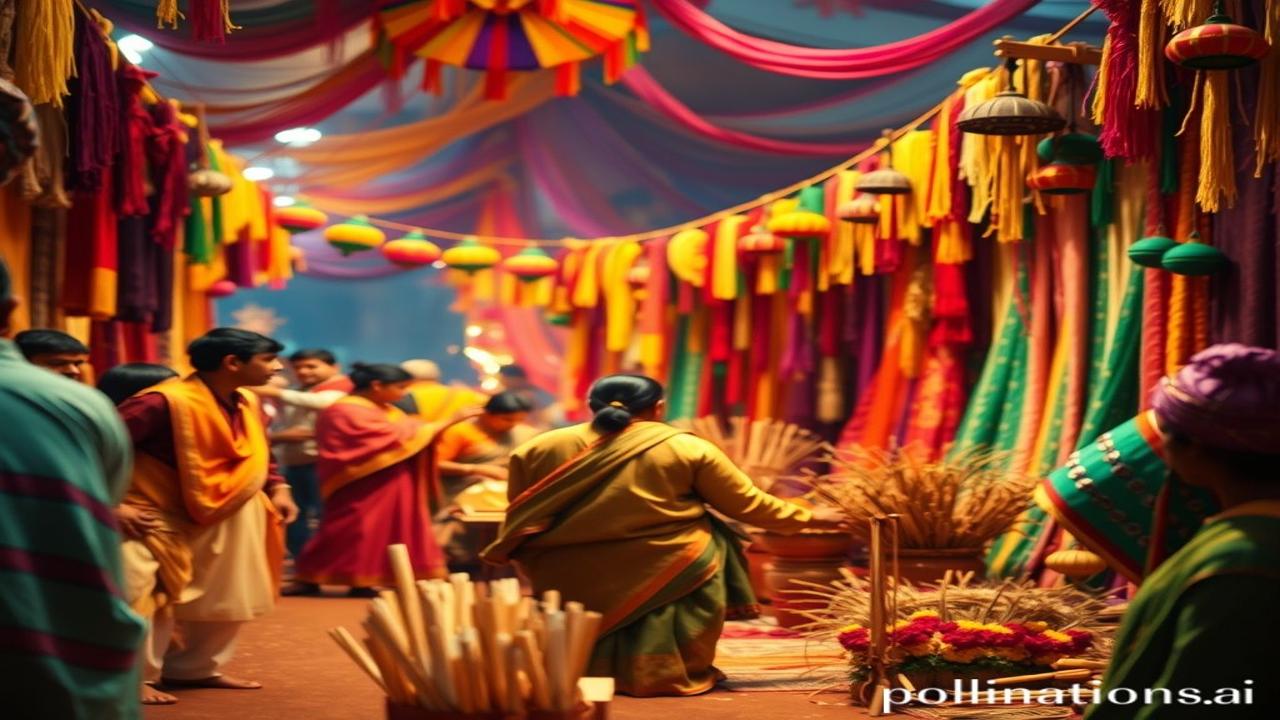Rang Birangi Virasat: Exploring Festival Arts & Crafts Across India
Kabhi socha hai, jab Diwali ke diye jalte hain, ya Durga Puja ke dhol bajte hain, toh unke saath kitni kahaniyan aur kitni kala juddi hoti hai? Waqt ki dhool mein chhupi hui yeh virasat, humare festivals ko aur bhi zyada rangin aur zinda banaati hai. Let’s dive into the vibrant world of festival arts and crafts, region by region, and uncover the stories woven into every thread, every brushstroke, and every beat of the drum.
Festival Arts & Crafts: A Tapestry of Time
What exactly are we talking about? Festival arts and crafts are the tangible expressions of our joy, devotion, and cultural identity that bloom during festive occasions. From the intricate Madhubani paintings of Bihar to the vibrant terracotta horses of Tamil Nadu, each region boasts its own unique artistry.
These traditions didn’t just pop into existence. They evolved over centuries, shaped by religious beliefs, local resources, and the ingenuity of generations. Think back to the ancient Indus Valley Civilization. Archaeological finds suggest even then, people were creating decorative pottery and ornaments, hinting at a deep-seated desire to celebrate life and faith through art.
Why are they important? Because these arts and crafts are not just pretty things. They’re a living link to our past. They tell stories of kings and saints, of gods and goddesses, of everyday struggles and triumphs. They’re a powerful symbol of Bharatiyata, of what it means to be Indian.
Ek Jhalak Zindagi Ki: A Glimpse into the Lives of Artisans
Imagine a village in Rajasthan, just before Teej. The air is thick with the scent of henna and the sound of women singing traditional songs. A local artisan, Chandni Bai, sits in her courtyard, meticulously crafting lac bangles, each one adorned with tiny mirrors and colorful beads. Her hands, weathered by years of practice, move with grace and precision.
Her daughter, Priya, watches intently, absorbing the techniques passed down through generations. “Ma,” Priya asks, “yeh rang kahan se aate hain?”
Chandni smiles. “Yeh rang, beti, humare dil se aate hain. Yeh pyaar aur shraddha ke rang hain, jo humare purvajon ne humein sikhaye hain.”
These artisans are the keepers of our cultural flame. They face challenges, yes. Globalization and mass-produced goods threaten their livelihoods. But their dedication, their passion for their craft, keeps these traditions alive.
Region-wise Highlights: A Kaleidoscope of Creativity
Let’s take a quick tour of India, highlighting some key festival arts and crafts:
- Bihar: Madhubani paintings bursting with mythological themes and vibrant colors, traditionally created on walls and now on paper. Used extensively during festivals like Diwali and Durga Puja.
- Rajasthan: Lac bangles, Puppet making (Kathputli) used in storytelling traditions during festivals and fairs. The intricate Meenakari work on jewelry also shines during celebrations.
- Tamil Nadu: Terracotta horses (Aiyanar horses) offered as votive offerings to deities, especially during village festivals. Kolam (Rangoli) patterns made with rice flour decorate homes and temples.
- West Bengal: Durga idols crafted with clay and painted with meticulous detail, a central aspect of Durga Puja celebrations. The Shola pith craft, using a type of reed, is used for intricate decorations.
- Gujarat: Garba costumes adorned with intricate embroidery and mirror work, essential for the Navratri festival. The colourful Pachedi cloths with depictions of goddesses are also significant.
Aaj Ki Pehchaan: Cultural Significance in Modern India
Do these ancient traditions still matter today? Absolutely!
We see Madhubani art on everything from sarees to coffee mugs. Garba music and dance have spread beyond Gujarat, becoming a nationwide craze. The spirit of these arts and crafts lives on, evolving and adapting to the modern world. They remind us of our roots, of our shared heritage, and of the enduring power of human creativity. They also help in supporting the livelihoods of artisan communities, blending tradition with modern entrepreneurship.
Mazedar Sach: Myth-Buster!
Log aksar samajhte hain ki “handicrafts” ka matlab sirf “old-fashioned” hota hai. Lekin asli sach yeh hai ki handicrafts innovation aur sustainability ka example hain. Many artisans are now using eco-friendly materials and modern designs while staying true to their traditional techniques. They are redefining what it means to create meaningful, beautiful objects in the 21st century.
Visual Aur Bhavnaayein: A Feast for the Senses
Imagine the aroma of sandalwood incense wafting through the air as you enter a temple during a festival. Feel the smooth, cool surface of a clay idol under your fingertips. Hear the rhythmic beat of drums and the lilting melodies of traditional songs echoing in the streets. See the explosion of colours – the bright reds, yellows, and greens of festive clothing, the intricate patterns of rangolis, the shimmering glitter of decorations. These are the sensory experiences that make our festivals so special, so unforgettable.
Antim Vichar: A Celebration of the Soul
“कला सृष्टि का आधार है, और उत्सव उस सृष्टि का उत्सव।”
Art is the foundation of creation, and festivals are the celebration of that creation. May we always cherish and celebrate the rich tapestry of festival arts and crafts that make India so uniquely vibrant and beautiful. These traditions are more than just decorations; they are the soul of our dharohar (heritage). Let us keep them alive.
